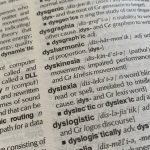Abstract
The education sector has undergone significant adaptations to cater to a diverse student population. A notable change has been the integration of SEN Teaching Assistants. These specialised professionals support students with learning difficulties or disabilities, ensuring tailored assistance for academic and social growth. The pathway to becoming an SEN Teaching Assistant involves specific educational backgrounds, training, and experience. Their effectiveness is determined not just by qualifications but also by intrinsic qualities, such as patience, adaptability, and empathy. In the larger educational framework, SEN Teaching Assistants bridge the gap between special needs students and mainstream education, promote inclusivity, and enhance overall teaching quality. This comprehensive guide delves into the roles, challenges, support structures, and evaluation mechanisms for SEN Teaching Assistants, aiming to highlight their indispensable contribution to modern education.
Introduction
The education sector has witnessed numerous changes over the years, adapting to the ever-evolving needs of its diverse student population. One essential adaptation has been the introduction of SEN Teaching Assistants. This paper delves into the role of the SEN Teaching Assistant, exploring what it means to be one, the path to becoming one, the qualities that define an effective SEN Teaching Assistant, and the significance of this role in the broader education system.
What is an SEN Teaching Assistant?
An SEN (Special Educational Needs) Teaching Assistant, also commonly referred to as an SEN TA, is a specialist who supports children with a variety of learning difficulties or disabilities in a school setting. This may include children with physical disabilities, sensory impairments, speech and language difficulties, learning difficulties, or behavioural concerns. The primary goal of an SEN TA is to ensure these children receive the tailored assistance they require to thrive academically and socially.
How to Become an SEN Teaching Assistant
- Educational Background: While it’s not always mandatory, possessing a degree in education, psychology, or a related field can be advantageous. In most instances, having GCSEs in English and Math at grade C or above is essential and a Level 3 Teaching Assistant qualification will most often be required.
- Training and Qualifications: Prospective SEN TAs should consider acquiring specific qualifications that enhance their understanding of special educational needs. For instance, the Level 3 Award in Supporting Teaching and Learning in Schools is beneficial.
- Experience: Building experience is crucial. Working or volunteering at schools, children’s centres, or nurseries can provide a deeper insight into the daily responsibilities and challenges faced by SEN TA’s.
- Continuous Learning: The field of special education is ever-evolving. Regular training sessions, workshops, and courses can help SEN TAs stay updated with the latest methodologies and tools.
What Makes a Good SEN Teaching Assistant?
Being an SEN Teaching Assistant goes beyond academic qualifications. Certain intrinsic qualities can define the effectiveness of an SEN TA:
- Patience and Understanding: Working with students with special needs can be challenging. An SEN TA must exhibit tremendous patience, understanding each student’s unique challenges and working at their pace.
- Adaptability: Every child’s needs are distinct. A good SEN TA should be able to adapt their teaching methods to cater to individual student requirements.
- Empathy and Compassion: Creating a safe, nurturing environment for students is essential. An SEN TA should be empathetic, understanding the emotional and psychological challenges students might face.
- Strong Communication Skills: This role involves liaising with teachers, parents, therapists, and sometimes other education professionals. Clear communication ensures everyone remains informed about a child’s progress and needs.
- Problem-solving Skills: Encountering challenges is commonplace in special education. An effective SEN TA should be able to think on their feet, coming up with solutions that suit specific situations.
The Significance of the SEN Teaching Assistant
In the broader education landscape, the SEN TA plays a pivotal role:
- Bridging the Gap: They bridge the gap between students with special needs and the mainstream classroom, ensuring that these students do not lag behind due to their unique challenges.
- Tailored Support: With their specialised training, SEN TAs can provide targeted support, catering to the individualised educational plans of each student.
- Promoting Inclusivity: By supporting students with special needs within mainstream classrooms, SEN TAs foster an inclusive environment where diversity is respected and celebrated.
- Collaborative Role: SEN TAs collaborate with teachers, helping them understand the nuances of special needs education and thus enhancing the overall teaching quality.
What does a SEN teaching assistant earn?
As of my last update in September 2021, the average salary for a SEN (Special Educational Needs) Teaching Assistant in the UK typically ranged from £17,000 to £20,000 per annum, depending on the location, level of responsibility, qualifications, and experience. However, in London and some other high-cost areas, salaries might be slightly higher.
In the United States, the title might be more akin to a “Special Education Paraprofessional” or “Special Education Assistant.” Their salaries can vary significantly based on the state and district, but on average, they might earn anywhere from $20,000 to $30,000 annually.
Conclusion
SEN Teaching Assistants hold a place of critical importance in modern education. Their specialised skills, combined with their passion for inclusivity and support, make them invaluable assets in schools. As champions for children with special educational needs, they ensure that every child, regardless of their challenges, gets an opportunity to learn, grow, and realise their potential. In doing so, they not only shape individual futures but also create a more inclusive, understanding, and compassionate society.
FAQs
What are the day-to-day tasks and responsibilities of an SEN Teaching Assistant?
An SEN (Special Educational Needs) Teaching Assistant’s day-to-day tasks primarily revolve around providing tailored support to students with diverse learning needs or disabilities. This includes assisting them in understanding and completing classroom tasks, adapting learning materials to suit individual needs, and using specialised teaching techniques to clarify concepts. Moreover, they often liaise with classroom teachers to ensure lessons are accessible to all students. In addition to academic support, SEN TAs may help with personal care needs of some students, manage challenging behaviours, and implement individual education or behaviour plans. They also monitor and record students’ progress, providing feedback to both teachers and parents, ensuring a cohesive approach to each student’s development.
What career advancement opportunities exist for SEN Teaching Assistants?
For SEN Teaching Assistants, several career advancement opportunities exist. With further training and experience, they can progress to become Higher Level Teaching Assistants (HLTAs), taking on more advanced responsibilities in the classroom. Many SEN TAs also choose to pursue formal teaching qualifications, enabling them to transition into full-fledged special needs teachers. Additionally, with specialised training, they might explore roles such as educational therapists, school counsellors, or special educational needs coordinators (SENCOs). Some also delve into administrative or advocacy roles within special education, guiding policies and programs to better support students with diverse needs.
What are some of the most common challenges SEN Teaching Assistants face in their roles?
SEN Teaching Assistants often grapple with a range of challenges in their roles. Foremost, they encounter a diverse spectrum of learning needs, requiring constant adaptation and specialised strategies. Managing challenging behaviours, especially without adequate support, can be emotionally taxing. The need for personalised attention can sometimes strain resources and time, especially in settings where the student-to-assistant ratio is high. Furthermore, collaborating effectively with teachers, parents, and other professionals to ensure a cohesive approach can present communication challenges. Lastly, navigating the emotional weight of witnessing students’ struggles, while rewarding, can also lead to feelings of burnout and stress.
What support structures or resources are typically available to SEN Teaching Assistants to help them in their roles?
SEN Teaching Assistants typically have access to various support structures and resources within educational settings. Schools often provide regular training sessions, workshops, and professional development opportunities tailored to special educational needs. Collaborative teams, including special education teachers, therapists, and special educational needs coordinators (SENCOs), offer guidance and share best practices. Many schools also offer mentoring programs where seasoned assistants’ mentor newer colleagues. Additionally, online forums, associations dedicated to special education, and resource banks provide materials and platforms for discussion. Furthermore, to address emotional well-being, some institutions offer counselling services or stress management programs for their staff.
How do SEN Teaching Assistants collaborate with other professionals like therapists, counsellors, and medical professionals in the education of students with special needs?
SEN Teaching Assistants actively collaborate with a multidisciplinary team of professionals to holistically address the needs of students. They liaise regularly with therapists, sharing observations and implementing recommended strategies or interventions within the classroom setting. With counsellors, they discuss students’ emotional and behavioural challenges, ensuring consistent support approaches. When medical professionals are involved, SEN Teaching Assistants communicate pertinent information regarding students’ health or medication needs during school hours. These collaborations ensure that all stakeholders are aligned in their efforts, fostering an integrated approach to support each student’s academic, emotional, and physical well-being.
How do SEN Teaching Assistants facilitate communication and collaboration with the parents or guardians of the students they support?
SEN Teaching Assistants play a pivotal role in bridging the gap between school and home. They frequently communicate with parents or guardians, updating them on their child’s academic progress, behavioural observations, and social interactions. This can be through scheduled meetings, informal chats at pick-up or drop-off times, written communication in the form of notes or diaries, or via digital platforms that many schools now employ. These interactions foster a collaborative approach, allowing for the exchange of valuable insights and strategies that can be used both at school and home. By maintaining open lines of communication, SEN TAs ensure that parents remain active partners in their child’s education journey.
What are the key laws, policies, or regulations that guide the work of SEN Teaching Assistants?
SEN Teaching Assistants operate within a framework of key laws, policies, and regulations designed to ensure the rights and needs of students with special educational needs are met. In the UK, for instance, the Children and Families Act 2014, particularly Part 3, is pivotal, introducing the new Education, Health and Care (EHC) plans. The SEND Code of Practice (2014) provides detailed guidance on duties, policies, and procedures related to SEN. Similarly, in the US, the Individuals with Disabilities Education Act (IDEA) mandates public schools to make available special education services to eligible students. These legal frameworks, along with school-specific policies, guide the roles, responsibilities, and practices of SEN Teaching Assistants, ensuring consistency and quality in the support they provide.
How is the performance of an SEN Teaching Assistant typically evaluated or assessed in a school setting?
The performance of an SEN Teaching Assistant is typically evaluated through a combination of direct observations, feedback from collaborating teachers, and reviews of student progress. School administrators or special education coordinators may observe sessions to assess the assistant’s interaction with students, their implementation of recommended strategies, and their adaptability to different situations. Feedback from teachers can provide insights into the assistant’s collaborative skills and contributions to classroom dynamics. Additionally, measurable progress or improvements in the students they support can be indicative of their effectiveness. Periodic review meetings and self-assessment tools may also be employed, allowing for a comprehensive evaluation and opportunities for professional growth.
Given the demanding nature of the role, how do SEN Teaching Assistants manage their emotional well-being and prevent burnout?
Given the emotionally charged nature of their work, SEN Teaching Assistants often employ a range of self-care and support strategies to maintain their well-being. Many engage in regular debriefing sessions with colleagues or supervisors, providing a safe space to share challenges and seek advice. Institutions might offer counselling or stress management workshops tailored to the unique demands of the role. Personal self-care practices, such as mindfulness, meditation, exercise, and ensuring work-life balance, can also play a vital role in managing emotional stress. Regular training and professional development not only enhance skills but also build confidence, reducing feelings of inadequacy or overwhelm. Additionally, seeking support from networks or associations dedicated to special education can offer camaraderie and shared understanding, further bolstering resilience against burnout.
Further reading
The Complete Guide to Special Education: Expert Advice on Evaluations, IEPs, and Helping Kids Succeed by Linda Wilmshurst and Alan W. Brue.
This book offers insights into the intricacies of special education, providing strategies and advice to help students succeed.
How to Support Pupils with Autism Spectrum Condition in Primary School by Lynn McCann.
A practical guide filled with strategies and tips for supporting students with Autism Spectrum Condition in a mainstream primary school setting.
Teaching Assistant’s Handbook for Level 2: Supporting Teaching and Learning in Schools by Teena Kamen.
This is an essential handbook for teaching assistants, detailing core information needed to effectively support learning in schools.
National Association of Special Educational Needs (NASEN)
NASEN offers a range of resources, training, and support for professionals working in the field of special educational needs.
Website URL: https://www.nasen.org.uk/
TES – Resources for SEN
TES provides a myriad of resources, including lesson plans, teaching strategies, and support materials for educators, including those working in special education.
Website URL: https://www.tes.com/teaching-resources
Council for Exceptional Children (CEC)
CEC is an international organisation dedicated to improving educational outcomes for individuals with exceptionalities, students with disabilities, and the professionals who work with them.
Website URL: https://www.cec.sped.org/
Author Profile
Latest entries
 Resources2024.01.25Animals That Start With The Letter N
Resources2024.01.25Animals That Start With The Letter N Bionic Reading2023.09.22Bionic Reading for Dyslexia: A Potential Bridge to Enhanced Comprehension
Bionic Reading2023.09.22Bionic Reading for Dyslexia: A Potential Bridge to Enhanced Comprehension Bionic Reading2023.09.21Bionic Reading for ADHD: Harnessing the Power of Visual Cues to Aid Focus and Comprehension
Bionic Reading2023.09.21Bionic Reading for ADHD: Harnessing the Power of Visual Cues to Aid Focus and Comprehension Bionic Reading2023.09.20Bionic Reading Method
Bionic Reading2023.09.20Bionic Reading Method




